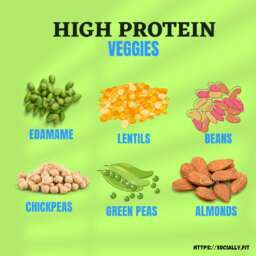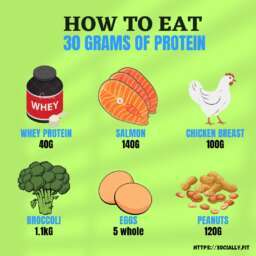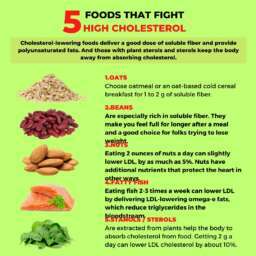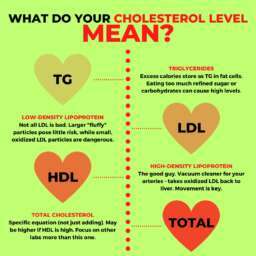Best Millet for Weight Loss: A Comprehensive Guide to Healthy Choices. Discover the best millets for weight loss in our detailed guide. Explore the nutritional benefits, compare different types, and learn how to incorporate these super grains into your diet for effective weight management.
Introduction

In recent years, the quest for effective weight loss solutions has led many individuals to explore healthier dietary options. Among these options, millets have emerged as a powerful contender due to their remarkable nutritional profile. Not only are millets packed with essential nutrients, but they also offer a myriad of health benefits that can support weight management. As people become more health-conscious, they increasingly recognize the value of incorporating millets into their daily diets. Consequently, understanding the best millet for weight loss becomes crucial for anyone looking to shed extra pounds without sacrificing taste or nutrition.
Furthermore, millets stand out for their versatility and ease of preparation. Whether you choose to enjoy them as a hearty breakfast, a satisfying lunch, or a comforting dinner, millets can seamlessly fit into any meal. Moreover, their high fiber content plays a significant role in promoting satiety, which helps curb hunger and prevent overeating. Additionally, millets have a low glycemic index, meaning they release energy slowly, keeping blood sugar levels stable. As you embark on your weight loss journey, discovering the best millets can empower you to make healthier choices while enjoying delicious, satisfying meals.
Best Millet for Weight Loss. millets for weight loss
Understanding Millets

What are Millets?
Millets are small-seeded grains that belong to the Poaceae family. They have been cultivated for thousands of years and are a staple food in many parts of the world, especially in Asia and Africa. Not only are they resilient to drought, but they also thrive in poor soil conditions, making them a sustainable choice for farmers.
Types of Millets. Best Millet for Weight Loss.
The variety of millets can be overwhelming, but here are some of the most commonly consumed types:
Pearl Millet (Bajra)
Pearl millet, commonly known as bajra, is one of the most widely cultivated millets globally. It thrives in arid and semi-arid regions, making it a staple food in many countries, particularly in Africa and India. This grain is rich in essential nutrients, including protein, fiber, and various vitamins and minerals. Notably, pearl millet is an excellent source of magnesium, phosphorus, and iron, which contribute to overall health. Its high fiber content aids in digestion and promotes satiety, making it an ideal choice for those looking to manage their weight.
In addition to its nutritional benefits, pearl millet has a low glycemic index, which means it releases glucose slowly into the bloodstream. This characteristic helps maintain stable blood sugar levels, making it a suitable option for individuals with diabetes. Furthermore, pearl millet is gluten-free, making it a safe choice for those with gluten sensitivities or celiac disease. With its nutty flavor and versatility, pearl millet can be used in various dishes, from porridge and flatbreads to salads and pilafs.
Best Millet for Weight Loss. millets for weight loss
Finger Millet (Ragi)
Finger millet, or ragi, is another highly nutritious millet known for its exceptional health benefits. It is particularly rich in calcium, making it an excellent choice for bone health. In addition to calcium, finger millet contains significant amounts of iron, dietary fiber, and antioxidants, which help combat oxidative stress in the body. The high fiber content in ragi promotes digestive health and aids in weight management by keeping you feeling full for longer periods.
Moreover, finger millet has a low glycemic index, which helps regulate blood sugar levels. This makes it a beneficial food for individuals with diabetes or those looking to maintain stable energy levels throughout the day. Ragi can be easily incorporated into various recipes, such as porridge, dosa, and even baked goods. Its earthy flavor and rich nutritional profile make it a popular choice among health-conscious individuals.
Best Millet for Weight Loss. millets for weight loss
Foxtail Millet
Foxtail millet is a small, nutritious grain that has gained popularity for its health benefits. It is rich in protein and fiber, making it an excellent option for those seeking to lose weight or maintain a healthy diet. Foxtail millet is also a good source of vitamins and minerals, including B vitamins, iron, and magnesium. These nutrients play a vital role in energy production and overall well-being.
One of the standout features of foxtail millet is its low carbohydrate content compared to other grains. This characteristic, combined with its high fiber content, helps promote satiety and control hunger, making it a great addition to weight loss diets. Foxtail millet can be used in various dishes, such as salads, stir-fries, and as a substitute for rice or pasta. Its mild flavor and versatility make it easy to incorporate into everyday meals.
Best Millet for Weight Loss. millets for weight loss
Barnyard Millet
Barnyard millet is one of the lesser-known millets, but it offers impressive health benefits. It is low in calories and high in fiber, making it an excellent choice for weight management. Barnyard millet is also rich in antioxidants, which help protect the body from oxidative stress and inflammation. Additionally, it contains essential nutrients such as iron, calcium, and phosphorus, contributing to overall health.
The low glycemic index of barnyard millet makes it suitable for individuals with diabetes, as it helps maintain stable blood sugar levels. Its high fiber content aids in digestion and promotes a feeling of fullness, which can help prevent overeating. Barnyard millet can be prepared in various ways, including as a porridge, in soups, or as a side dish. Its unique texture and flavor add variety to meals while providing numerous health benefits.
Best Millet for Weight Loss. millets for weight loss
Little Millet
Little millet is a small grain that packs a nutritional punch. It is rich in fiber, protein, and essential vitamins and minerals, making it a valuable addition to a healthy diet. Little millet is particularly high in antioxidants, which help combat oxidative stress and support overall health. Its high fiber content aids in digestion and promotes satiety, making it an excellent choice for those looking to lose weight.
Like other millets, little millet has a low glycemic index, which helps regulate blood sugar levels. This characteristic makes it suitable for individuals with diabetes or those seeking to maintain stable energy levels. Little millet can be used in various dishes, such as porridge, salads, and as a substitute for rice or couscous. Its mild flavor and versatility make it easy to incorporate into a wide range of recipes, allowing you to enjoy its health benefits while diversifying your meals.
Each type has its own unique flavor and nutritional profile, which contributes to its health benefits.
Best Millet for Weight Loss. millets for weight loss
Nutritional Profile of Millets

Millets are packed with essential nutrients. They are rich in proteins, vitamins, and minerals while being low in calories. Additionally, millets provide a great source of dietary fiber, which is crucial for weight loss.For example, a 100-gram serving of cooked millet contains approximately:
- Calories: 119
- Protein: 3.5 grams
- Fat: 1.0 gram
- Carbohydrates: 22.0 grams
- Fiber: 2.0 grams
These values can slightly vary depending on the type of millet, but they all share similar health advantages.
Best Millet for Weight Loss. millets for weight loss
Why Choose Millets for Weight Loss?

High Fiber Content
Millets are rich in dietary fiber, which plays a crucial role in weight loss. Fiber helps you feel full longer, reducing overall calorie intake. By incorporating millets into your meals, you can curb hunger pangs and avoid unhealthy snacking between meals.
Low Glycemic Index
Millets have a low glycemic index, meaning they release glucose slowly into the bloodstream. This slow release helps maintain stable blood sugar levels, preventing spikes and crashes that can lead to cravings and overeating. Choosing millets can help you manage your appetite more effectively.
Nutrient-Dense
Millets are packed with essential nutrients, including vitamins, minerals, and antioxidants. They provide a wealth of health benefits without excessive calories, making them an excellent choice for a weight loss diet. By choosing nutrient-dense foods like millets, you can nourish your body while losing weight.
Versatile Ingredient
Millets can be used in a variety of dishes, from breakfast porridge to salads and side dishes. Their versatility allows you to experiment with different recipes, making it easier to stick to a healthy eating plan. Incorporating millets into your meals can keep your diet interesting and enjoyable.
Gluten-Free Option
For those with gluten sensitivities or celiac disease, millets offer a gluten-free alternative to wheat and other grains. This makes them a safe and healthy choice for individuals looking to lose weight while avoiding gluten. By replacing gluten-containing grains with millets, you can still enjoy a satisfying diet.
Best Millet for Weight Loss. millets for weight loss
Supports Digestive Health
The high fiber content in millets not only aids in weight loss but also promotes digestive health. A healthy digestive system is essential for effective weight management, as it helps your body absorb nutrients efficiently and eliminate waste. Including millets in your diet can support a healthy gut.
Rich in Antioxidants
Millets contain various antioxidants that help combat oxidative stress and inflammation in the body. Reducing inflammation can support weight loss efforts by improving metabolic health. By choosing millets, you can benefit from their antioxidant properties while working towards your weight loss goals.
Sustained Energy Levels
Millets provide a steady source of energy due to their complex carbohydrates. Unlike refined grains that can lead to energy crashes, millets help maintain consistent energy levels throughout the day. This sustained energy can enhance your physical activity, further supporting weight loss.
Promotes Healthy Snacking
Millets can be transformed into healthy snacks, such as millet bars or popped millet. These snacks are not only nutritious but also satisfying, making them a great alternative to processed snacks that are high in sugar and unhealthy fats. Choosing millet-based snacks can help you stay on track with your weight loss journey.
Encourages Mindful Eating
Incorporating millets into your meals encourages mindful eating practices. Preparing and enjoying millet dishes can help you focus on your food, promoting a greater awareness of portion sizes and hunger cues. This mindfulness can lead to healthier eating habits and contribute to successful weight loss.
By choosing millets as part of your weight loss strategy, you can enjoy a range of health benefits while effectively managing your weight. Their nutritional profile, versatility, and positive impact on satiety make them an excellent addition to any healthy diet.
Best Millet for Weight Loss. millets for weight loss
How to Incorporate Millets into Your Diet

Integrating millets into your meals can be simple and delicious. Here are some ideas for different times of the day.
Breakfast Ideas
Start your day with a nourishing millet breakfast. You might try:
- Millet Porridge: Cook millet in water or milk, add fruits and nuts for a hearty breakfast.
- Ragi Pancakes: Mix ragi flour with banana and eggs for a nutritious pancake option.
Lunch Recipes
For lunch, consider:
- Millet Salad: Combine cooked millet with fresh vegetables, herbs, and a light dressing for a refreshing salad.
- Bajra Khichdi: Cook pearl millet with lentils and spices for a comforting dish.
Dinner Options
At dinner, you could enjoy:
- Foxtail Millet Stir-Fry: Stir-fry foxtail millet with your favorite vegetables for a quick meal.
- Ragi Idli: Use ragi flour to make steamed idlis paired with coconut chutney.
Snacks and Desserts
Finally, for snacks or desserts, try:
- Millet Cookies: Bake cookies using millet flour for a healthier treat.
- Barnyard Millet Pudding: Cook barnyard millet with coconut milk and sweetener for a delightful dessert.
Best Millet for Weight Loss. millets for weight loss
Potential Health Benefits of Millets: Best Millet for Weight Loss
- Rich in Nutrients
Millets are packed with essential nutrients, including vitamins, minerals, and antioxidants. They provide a good source of magnesium, phosphorus, and iron, which are vital for various bodily functions. Incorporating millets into your diet can help ensure you meet your nutritional needs while promoting overall health. - Supports Digestive Health
The high fiber content in millets aids in digestion by promoting regular bowel movements and preventing constipation. Fiber also acts as a prebiotic, supporting the growth of beneficial gut bacteria. A healthy digestive system is crucial for nutrient absorption and overall well-being. - Helps Manage Blood Sugar Levels
Millets have a low glycemic index, which means they release glucose slowly into the bloodstream. This property makes them an excellent choice for individuals with diabetes or those looking to manage their blood sugar levels. By stabilizing blood sugar, millets can help reduce the risk of insulin resistance and related health issues. - Promotes Heart Health
The fiber, antioxidants, and healthy fats found in millets contribute to heart health. Regular consumption of millets can help lower cholesterol levels, reduce blood pressure, and improve overall cardiovascular function. This makes millets a heart-friendly grain choice for maintaining a healthy lifestyle. - Aids in Weight Management
Millets are nutrient-dense and high in fiber, which can help you feel full longer and reduce overall calorie intake. Their ability to promote satiety makes them an effective food choice for those looking to lose or maintain weight. Including millets in your meals can support your weight management goals. - Gluten-Free Alternative
For individuals with gluten sensitivities or celiac disease, millets offer a safe and nutritious gluten-free alternative to wheat and other grains. This allows those who need to avoid gluten to enjoy a variety of dishes without compromising their health. - Rich in Antioxidants
Millets contain various antioxidants, such as phenolic compounds, which help combat oxidative stress and inflammation in the body. Antioxidants play a crucial role in protecting cells from damage and reducing the risk of chronic diseases, including heart disease and cancer. - Supports Bone Health
Certain types of millets, particularly finger millet, are rich in calcium, which is essential for maintaining strong bones and preventing osteoporosis. Including millets in your diet can contribute to better bone health, especially for individuals at risk of calcium deficiency. - Enhances Energy Levels
Millets are a good source of complex carbohydrates, providing a steady release of energy throughout the day. Unlike refined grains that can lead to energy crashes, millets help maintain consistent energy levels, making them an excellent choice for active individuals. - Boosts Immune Function
The vitamins and minerals found in millets, along with their antioxidant properties, can help strengthen the immune system. A robust immune system is essential for fighting off infections and maintaining overall health. By incorporating millets into your diet, you can support your body’s natural defenses.
Incorporating millets into your daily meals can provide a wide range of health benefits, making them a valuable addition to a balanced diet. Their nutritional profile, versatility, and positive impact on health make millets an excellent choice for anyone looking to improve their overall well-being.
Best Millet for Weight Loss. millets for weight loss
Precautions and Considerations: Best Millet for Weight Loss

- Moderation is Key
While millets are nutritious, consuming them in moderation is essential. Overeating any food, including millets, can lead to an imbalance in your diet. Aim to incorporate millets as part of a varied diet to ensure you receive a wide range of nutrients. - Soaking and Cooking
To enhance nutrient absorption and reduce anti-nutritional factors, it is advisable to soak millets before cooking. This process can help break down phytic acid, which can inhibit the absorption of minerals. Proper cooking methods also ensure that millets are easier to digest. - Allergies and Sensitivities
Some individuals may have allergies or sensitivities to specific types of millets. If you are trying millets for the first time, monitor your body’s response and consult a healthcare professional if you experience any adverse reactions. - Balance with Other Grains
While millets are a healthy choice, it’s important to balance them with other grains in your diet. This variety ensures you receive a broader spectrum of nutrients and helps prevent potential deficiencies that may arise from relying solely on one type of grain. - Hydration
Millets are high in fiber, which can lead to digestive discomfort if not accompanied by adequate hydration. Ensure you drink plenty of water throughout the day to help your body process the fiber effectively and maintain digestive health. - Consult with a Healthcare Provider
If you have specific health conditions, such as kidney issues or diabetes, consult with a healthcare provider before making significant changes to your diet. They can provide personalized advice on how to incorporate millets safely. - Watch for Added Ingredients
When purchasing processed millet products, be cautious of added sugars, preservatives, or unhealthy fats. Always read labels to ensure you are choosing products that align with your health goals. - Cooking Methods Matter
The way you prepare millets can impact their health benefits. Opt for healthier cooking methods, such as steaming or boiling, rather than frying, to maintain their nutritional value and avoid unnecessary calories. - Potential Goitrogenic Effects
Some millets, like finger millet, contain goitrogens, which can interfere with thyroid function in sensitive individuals. If you have thyroid issues, it’s wise to consult with a healthcare professional regarding the consumption of these millets. - Storage Conditions
Store millets in a cool, dry place to prevent spoilage and maintain their nutritional quality. Proper storage can help avoid the growth of mold or pests, ensuring that the millets you consume are safe and healthy.
Best Millet for Weight Loss. millets for weight loss
Comparison of Fiber Content: Pearl Millet vs. Finger Millet for Weight Loss
| Feature | Pearl Millet | Finger Millet |
|---|---|---|
| Fiber Content | Approximately 8.5 grams per 100g | Approximately 11 grams per 100g |
| Soluble Fiber | Contains soluble fiber, aiding satiety | High in soluble fiber, promoting fullness |
| Insoluble Fiber | Good source of insoluble fiber for digestion | Rich in insoluble fiber, enhancing gut health |
| Satiety Levels | Moderately increases satiety | Significantly increases satiety |
| Weight Loss Support | Supports weight loss due to fiber | More effective for weight loss due to higher fiber |
| Digestive Health | Promotes regularity through fiber | Enhances digestion with higher fiber content |
| Caloric Density | Lower caloric density due to fiber content | Lower caloric density, beneficial for weight loss |
| Nutrient Absorption | Fiber aids absorption of nutrients | Similar benefits for nutrient absorption |
| Overall Benefits | Good for weight management | Superior for weight management |
| Versatility | Versatile in cooking, can be used in various dishes | Also versatile, but more commonly used in specific recipes |
Analysis
When comparing fiber content, finger millet outperforms pearl millet, providing a greater amount of dietary fiber per 100 grams. This higher fiber content not only enhances satiety but also promotes better digestive health. Consequently, individuals looking to lose weight may find finger millet more beneficial in managing hunger and reducing overall calorie intake. Additionally, both millets promote efficient nutrient absorption, making them excellent choices for a balanced diet.
Best Millet for Weight Loss. millets for weight loss
Glycemic Index Comparison: Foxtail Millet vs. Barnyard Millet
| Feature | Foxtail Millet | Barnyard Millet |
|---|---|---|
| Glycemic Index (GI) | Approximately 50 (low GI) | Approximately 40 (lower GI) |
| Carbohydrate Content | Moderate carbohydrate content | Lower carbohydrate content |
| Effect on Blood Sugar | Slower rise in blood sugar levels | Even slower rise, beneficial for diabetes |
| Satiety Factor | Moderate satiety due to fiber | Higher satiety due to lower GI |
| Weight Management | Good for weight management | Excellent for weight management |
| Digestive Health | Supports digestive health | Highly effective for digestive health |
| Nutritional Benefits | Contains essential nutrients | Rich in antioxidants and vitamins |
| Energy Levels | Provides sustained energy | Offers stable energy levels |
| Cooking Versatility | Versatile in recipes | Also versatile but particularly good in specific dishes |
| Overall Health Benefits | Supports overall health | Superior for managing blood sugar and weight |
Analysis
When considering glycemic index, barnyard millet has a lower GI than foxtail millet, resulting in a more gradual increase in blood sugar levels. This property is particularly advantageous for weight management, as it helps maintain stable energy levels and reduces cravings. Both millets support digestive health, yet barnyard millet may provide more pronounced benefits for individuals managing their weight.
Best Millet for Weight Loss. millets for weight loss
Protein Content Comparison: Little Millet vs. Ragi
| Feature | Little Millet | Ragi (Finger Millet) |
|---|---|---|
| Protein Content | Approximately 7.7 grams per 100g | Approximately 9.3 grams per 100g |
| Amino Acid Profile | Good source of essential amino acids | Offers a complete amino acid profile |
| Satiety Levels | Moderately increases satiety | Significantly enhances satiety |
| Weight Loss Support | Supports weight loss due to protein | More effective for weight loss due to higher protein |
| Muscle Maintenance | Good for muscle maintenance | Excellent for muscle maintenance |
| Digestive Benefits | Contains dietary fiber | Also rich in dietary fiber |
| Versatility | Versatile in various dishes | Commonly used in traditional recipes |
| Caloric Density | Moderate caloric density | Lower caloric density |
| Overall Nutritional Value | Good overall nutritional value | Superior nutritional value |
| Health Benefits | Supports overall health | Highly beneficial for bone health |
Analysis
Ragi offers a higher protein content compared to little millet, making it a more effective option for enhancing satiety and supporting muscle maintenance during weight loss. The complete amino acid profile of ragi is particularly beneficial for individuals seeking to build or preserve muscle while losing weight. Both millets provide essential nutrients and dietary fiber, contributing positively to overall health and weight management.
Best Millet for Weight Loss. millets for weight loss
Calorie Count Comparison: Barnyard Millet vs. Pearl Millet
| Feature | Barnyard Millet | Pearl Millet |
|---|---|---|
| Caloric Content | Approximately 100 calories per 100g | Approximately 120 calories per 100g |
| Energy Density | Lower energy density | Moderate energy density |
| Weight Loss Suitability | More suitable for weight loss | Suitable for weight loss but higher in calories |
| Nutritional Value | Rich in vitamins and minerals | Nutrient-rich but slightly higher in calories |
| Fiber Content | High fiber content | Good fiber content |
| Post-Meal Satisfaction | Higher post-meal satisfaction | Moderate post-meal satisfaction |
| Versatility | Versatile in various dishes | Also versatile in cooking |
| Digestive Benefits | Highly beneficial for digestion | Supportive of digestive health |
| Overall Health Benefits | Excellent for overall health | Good for overall health |
| Caloric Management | Better for caloric control | Requires mindful portion control |
Analysis
Barnyard millet has a lower calorie count than pearl millet, which makes it a more suitable option for those focusing on weight loss. While pearl millet is nutritious, its higher caloric density can be a consideration for individuals monitoring their caloric intake. Both millets provide fiber and essential nutrients, contributing positively to digestive health and overall wellness.
Best Millet for Weight Loss. millets for weight loss
Nutrient Density Comparison: Finger Millet vs. Foxtail Millet
| Feature | Finger Millet | Foxtail Millet |
|---|---|---|
| Nutrient Density | Very high nutrient density | High nutrient density |
| Calcium Content | Rich in calcium | Moderate calcium content |
| Iron Content | High in iron | Good source of iron |
| Fiber Content | Very high fiber content | High fiber content |
| Antioxidant Levels | Rich in antioxidants | Contains antioxidants |
| Vitamins | High in B vitamins | Good source of B vitamins |
| Weight Loss Support | Highly effective for weight loss | Effective for weight loss but slightly less so |
| Digestion | Excellent for digestive health | Good for digestive health |
| Overall Health Benefits | Superior overall health benefits | Good overall health benefits |
| Culinary Use | Common in traditional recipes | Versatile in various cuisines |
Analysis
Finger millet stands out with a very high nutrient density, making it particularly effective for weight loss. Its rich calcium and iron content, along with substantial fiber levels, contribute significantly to satiety and digestive health. While foxtail millet is also nutritious, finger millet offers a more comprehensive range of health benefits, making it a superior choice for those focused on weight management and overall wellness.
Best Millet for Weight Loss. millets for weight loss
Conclusion: Best Millet for Weight Loss
Millets are a powerhouse of nutrition, offering numerous health benefits that can enhance overall well-being. Their high fiber content, low glycemic index, and rich nutrient profile make them an excellent choice for those looking to improve their diet. However, it is essential to approach their consumption with mindfulness and consideration of individual health needs. By incorporating millets into a balanced diet, you can enjoy their advantages while minimizing potential drawbacks
.As with any dietary change, moderation and variety are crucial. Millets should be part of a diverse diet that includes a range of foods to ensure you receive all the necessary nutrients. By soaking and cooking millets properly, staying hydrated, and being aware of any allergies or sensitivities, you can maximize their health benefits while enjoying their unique flavors and textures.
Incorporating millets into your meals can be a delicious and nutritious way to support your health goals. Whether you choose to enjoy them in salads, porridge, or as a side dish, millets can add variety and richness to your diet. With the right precautions and considerations, you can make the most of this ancient grain and contribute positively to your overall health and wellness.
Best Millet for Weight Loss. millets for weight loss
FAQs: Best Millet for Weight Loss
Q1: Can millets help with weight loss?
Yes, millets are high in fiber and low in calories, making them an excellent choice for weight loss.
Q2: Which millet is best for weight loss?
Pearl millet and finger millet are particularly effective for weight loss due to their nutritional profiles.
Q3: How can I cook millets?
Millets can be cooked like rice or added to dishes such as salads, porridge, and stir-fries.
Q4: Are millets gluten-free?
Yes, millets are naturally gluten-free, making them suitable for those with gluten sensitivities.
Q5: How often should I eat millets?
Incorporating millets into your diet several times a week can provide health benefits without overdoing fiber intake.
Click here to know more about weight loss. Subscribe to Workout with Hunar for weight loss and workout videos.
Best Millet for Weight Loss. millets for weight loss















One thought on “Best Millet for Weight Loss”